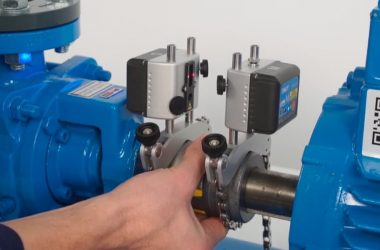Gantry systems are computer-controlled machines that move along a fixed path to perform various tasks. They are often used in manufacturing and assembly applications. These systems have replaced traditional manual assembly lines in many factories.
These systems offer many advantages over manual assembly lines. They are more efficient and can handle more complicated tasks. They can also be easily reconfigured to change the sequence of operations.
They have revolutionized manufacturing. They are faster, more flexible, and more reliable than manual assembly lines. If you are looking for a way to improve your manufacturing process, gantry systems are a great option.
If you are considering implementing a gantry system in your manufacturing operation, this article is for you. We will explain how gantry systems work and their benefits.
The main components of a gantry system include:
1. Gantry:
A framework that supports the other components of the system, including motors and other mechanical devices. The gantry moves along a rail or track as it performs its duties. The size of these frames varies depending on the application, but they generally range from 2 feet by 4 feet to 10 feet by 20 feet or more. Some larger gantries may reach 30 feet long or more!
2. Robot:
A programmable machine with arms, hands, or other devices that can manipulate objects during an operation (such as placing parts into a machine). Robots work with humans to perform complex tasks like assembling parts together or building entire structures. While they may look similar to industrial robots in appearance, they are actually very different pieces of machinery that perform tasks differently than their industrial counterparts.
Benefits of the gantry systems:
1. Increased productivity:
In many applications, the gantry system is used to increase productivity. This is because it allows a higher level of automation, and therefore fewer workers are needed. This will result in lower labour costs as well as increased efficiency and speed of production/assembly. Gantry systems are also designed to allow you to work at any angle or height because they have an infinite range of motion which offers maximum flexibility when performing any task you need them for.
2. Improved quality control:
This system also provides improved quality control by allowing operators to see their work from every angle as it’s being produced. This feature is especially important during assembly and testing processes so that any flaws can be identified and corrected before they become part of the finished product.
In addition, operators can inspect products at any stage during production without having to interrupt production just to check on each individual part or unit before it’s finished. This eliminates human error and makes it easier for manufacturers to meet customer specifications while maintaining a high level of quality assurance throughout their entire product line-up.
3. Reduced labour costs:
It requires fewer workers than other types of cranes because it doesn’t require someone holding onto the load while it’s being moved around. This means that you’ll spend less money on labour costs and have more time available for other tasks within your facility.
4. Improved safety and ergonomics:
This is designed to be safer and more ergonomic than a traditional overhead crane. This is because it has a smaller footprint than an overhead crane, making it easier to fit in tight spaces. It also takes up less space in the warehouse or factory, so there’s less room for error and mistakes.
5. Minimizes the risk of human error
The gantry system uses a computer-controlled system that requires very little physical effort on the part of the operator. As a result, there are fewer mistakes made during operation and maintenance. This can prevent accidents and injuries in both manufacturing plants and warehouses.
6. Easily adaptable to changing needs
They are versatile machines that can be used in many different applications. They can be used for assembly, inspection, maintenance and repair tasks across industries like pharmaceuticals, electronics, automotive parts manufacturing and aerospace engineering.
The most common type of gantry systems are those that require manual control, but they can also be integrated with other automated systems such as robotic arms or automated guided vehicles (AGV). This means they’re easily adaptable to changing conditions within your business.
Conclusion:
Gantry systems can help you improve productivity, quality, and efficiency at your manufacturing facility.






















